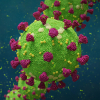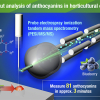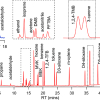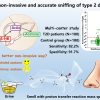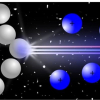Medical testing has been undergoing a quiet but extensive metamorphosis as labs adopt the versatile technology mass spectrometry, which enables more precise diagnosis. A special issue of Clinical Chemistry, titled “Clinical Mass Spectrometry: Achieving Prominence in Laboratory Medicine”, showcases recent medical advances that this technology has made possible, from the development of new screening methods for designer drugs to a surgical knife that detects cancerous tissue.
Mass spectrometry made its first splash in the medical world when it emerged as the most accurate technique for drug screening due to its ability to essentially fingerprint molecules. Since then, it has improved the sensitivity and specificity of clinical tests in numerous other areas, including those for thyroid cancer and infertility, managing treatment with immunosuppressant drugs, and identifying causes of infection so that doctors can target antibiotic therapy.
As mass spectrometry expands into almost every area of clinical testing, it remains a formidable weapon in the fight against drugs of abuse. In a study featured in this special issue of Clinical Chemistry, mass spectrometry plays an integral role in a breakthrough research method that could lessen the appeal of designer drugs by making them easier to detect via urine testing.
Mass spectrometry has impacted newborn screening as well, which is the practice of testing every infant for 29 genetic conditions that cause illness, disability or death if left untreated. All states in the US now use mass spectrometry for their newborn screening programmes, and research in this issue on a mass spectrometry test for metachromatic leukodystrophy could make it possible to add this serious disorder to the screening list.
Disciplines that have begun to realise the potential of mass spectrometry more recently range from endocrinology to microbiology, and anatomic pathology to pharmacogenetics. In the arena of endocrinology, this issue highlights a study showing that a mass spectrometry-based “lab on a plate” method predicts diabetes patients’ risk of heart attack and stroke more efficiently than current tests. The issue also includes a review of mass spectrometry techniques that are advancing pathology, such as an electrosurgical device that is coupled to a mass spectrometer, enabling oncology surgeons to test the tissue surrounding a tumour in real time to determine whether any cancer cells remain after the tumour’s removal.
Because mass spectrometers were not designed for medical use, however, labs have encountered difficulties when implementing this technology, and many challenges must still be overcome before mass spectrometry becomes a routine clinical technique. The special issue addresses some of these challenges, and includes a special report with recommendations that will help to ensure that the results of mass spectrometry protein tests are uniform across all labs. These recommendations are much-needed as more and more labs turn to mass spectrometry to avoid the pitfalls of traditional protein tests that are less reliable.
“Once in a while an innovation comes along that has a dramatic and lasting impact on the field of laboratory medicine”, wrote issue editors and mass spectrometry experts Thomas M. Annesley, R. Graham Cooks, David A. Herold and Andrew N. Hoofnagle, in the preamble to the special issue. “In the same way that [the colorimeter/spectrophotometer, autoanalyser, and immunoassay] changed the field, so has the introduction of mass spectrometry. This special issue of Clinical Chemistry illustrates how mass spectrometry has achieved prominence in laboratory medicine. Our goal is to chronicle the past, analyse the present, and project the future of this important technology.”





